This bright and zesty lemon syrup cake is rich, buttery and bursting with fresh lemon flavour! Light and fluffy in the middle, it is drizzled with a tangy lemon syrup to make it extra moist and citrusy and topped with a crackly lemon glaze. Serve warm, with double cream on the side for the perfect afternoon tea.
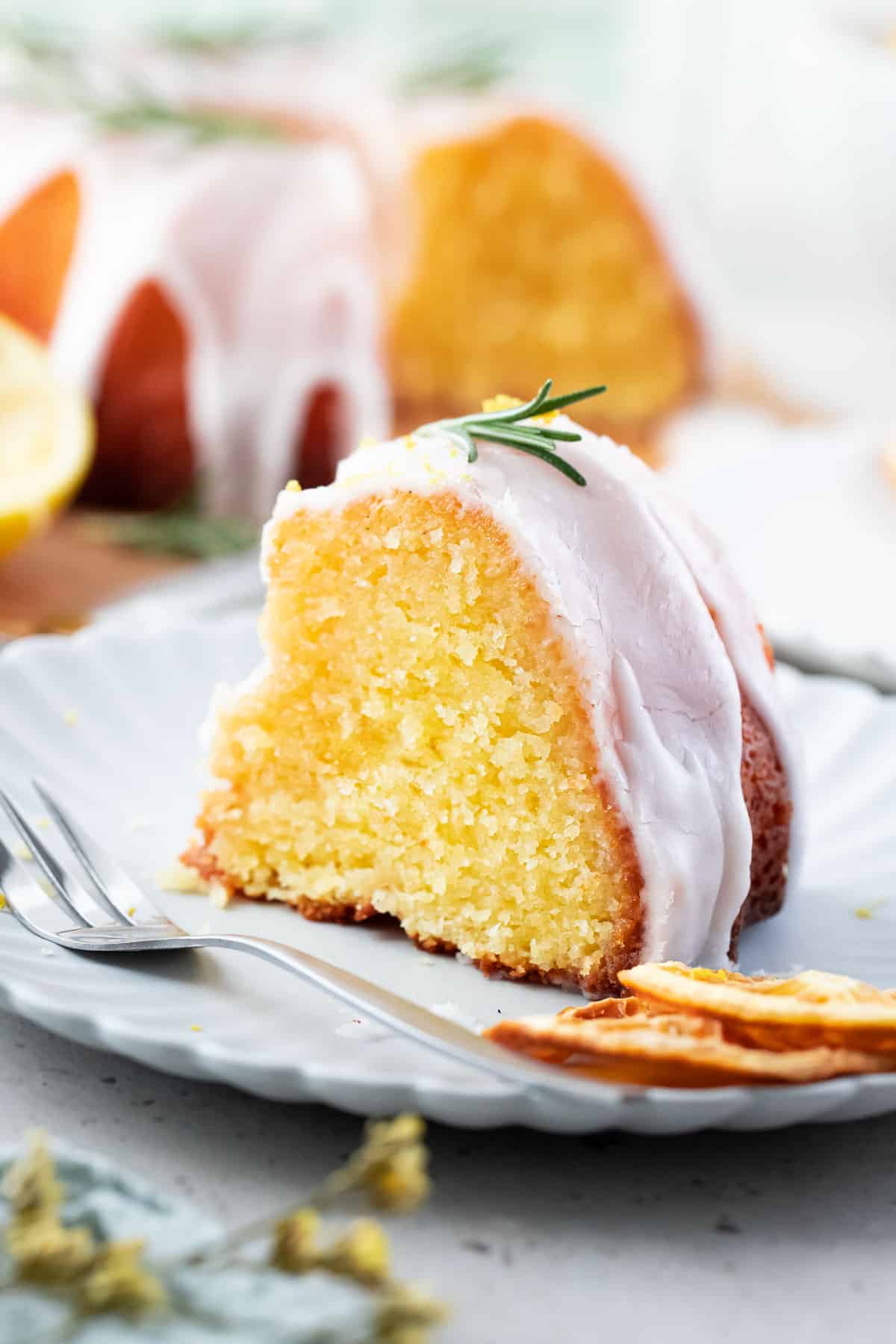
One reader, Marie says: ⭐️⭐️⭐️⭐️⭐️”We have an abundance of lemons so I made this yesterday and we have just eaten a slice with a cuppa. We all three of us gave it a gold star, it is the best lemon cake recipe we have ever tried.”
Why you’ll love this recipe
- So simple – it is such an easy recipe to make and it’s ready to eat in less than an hour.
- SUPER moist – this cake is unapologetically moist, rich and buttery with a tender crumb. And the main attraction is the zesty lemon syrup, which soaks into the cake for even more moisture!
- Strong lemon flavour – An easy lemon cake that uses both fresh lemon juice and zest, for the best lemon flavour. If you love your cakes with extra lemon, then this cake is for you!
- Basic ingredients – this recipe uses fresh lemons and a handful of easy pantry and fridge staples, like butter, sour cream, flour and eggs.
Ingredients you will need
* This post contains tips and instructions to achieve the best possible results. The photo above is a great guide for when you are in the supermarket, but for full ingredient quantities and methods, please scroll down to the detailed recipe card below!
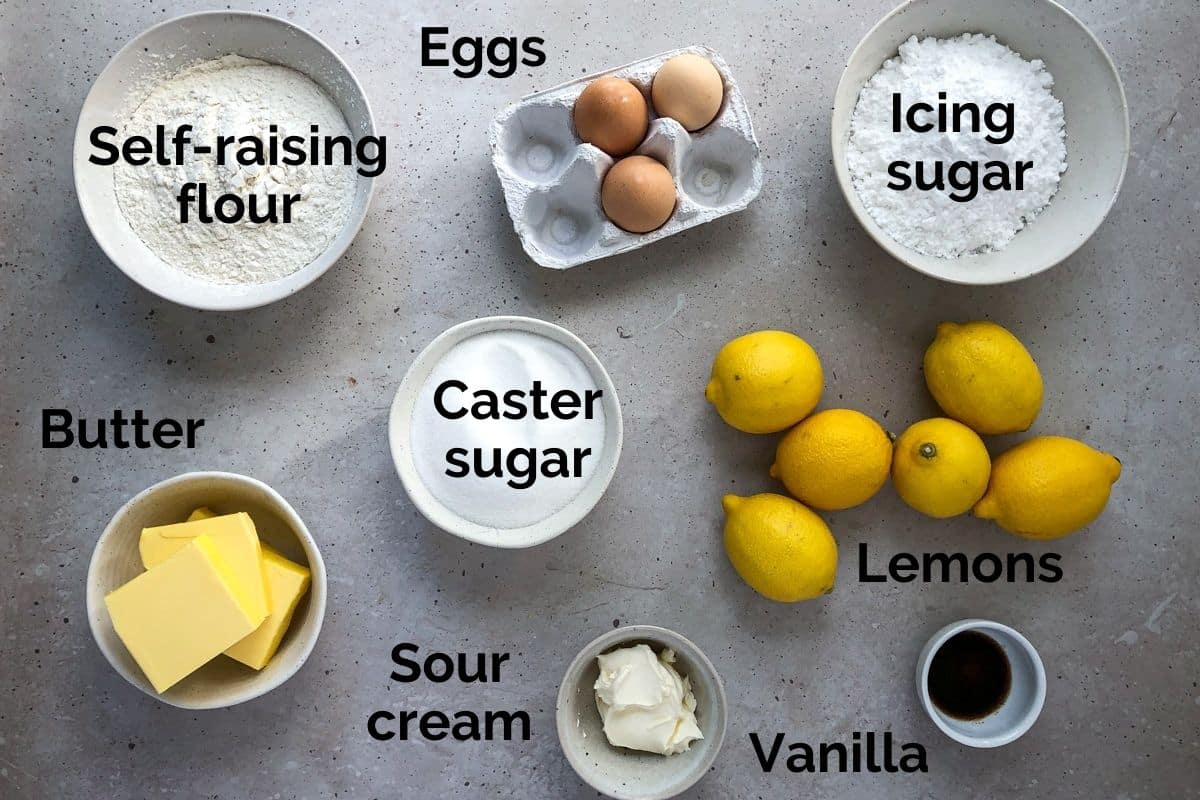
Self-Raising Flour – is used to for the structure (and rising agent) of the cake. Be sure to measure/level the flour correctly for a tender, moist cake. I have included weights below, for accuracy.
Lemons – fresh lemons are best, as both the zest and juice are used. I recommend Meyer lemons for their sweet-tart flavour and high juice content, but any fresh and in-season lemon will work.
Butter – for best flavour and results, I recommend using real, full-fat butter rather than margarine or butter substitutes. The butter needs to be softened, at room temperature.
Eggs – to bind the cake and provide structure, stability, richness and moisture. Large, free range eggs at room temperature are recommended.
Sour cream – gives a slight tang and provides a beautifully creamy moisture. Full-fat sour cream is recommended, or swap for equal quantities of plain, full-fat Greek yoghurt.
Step by step instructions
- Beat the butter, sugar and lemon zest together; using a wooden spoon, beat room temperature butter with the caster sugar and lemon zest until pale and fluffy.
- Add room temperature eggs, one at a time; stir until incorporated into the butter mixture.
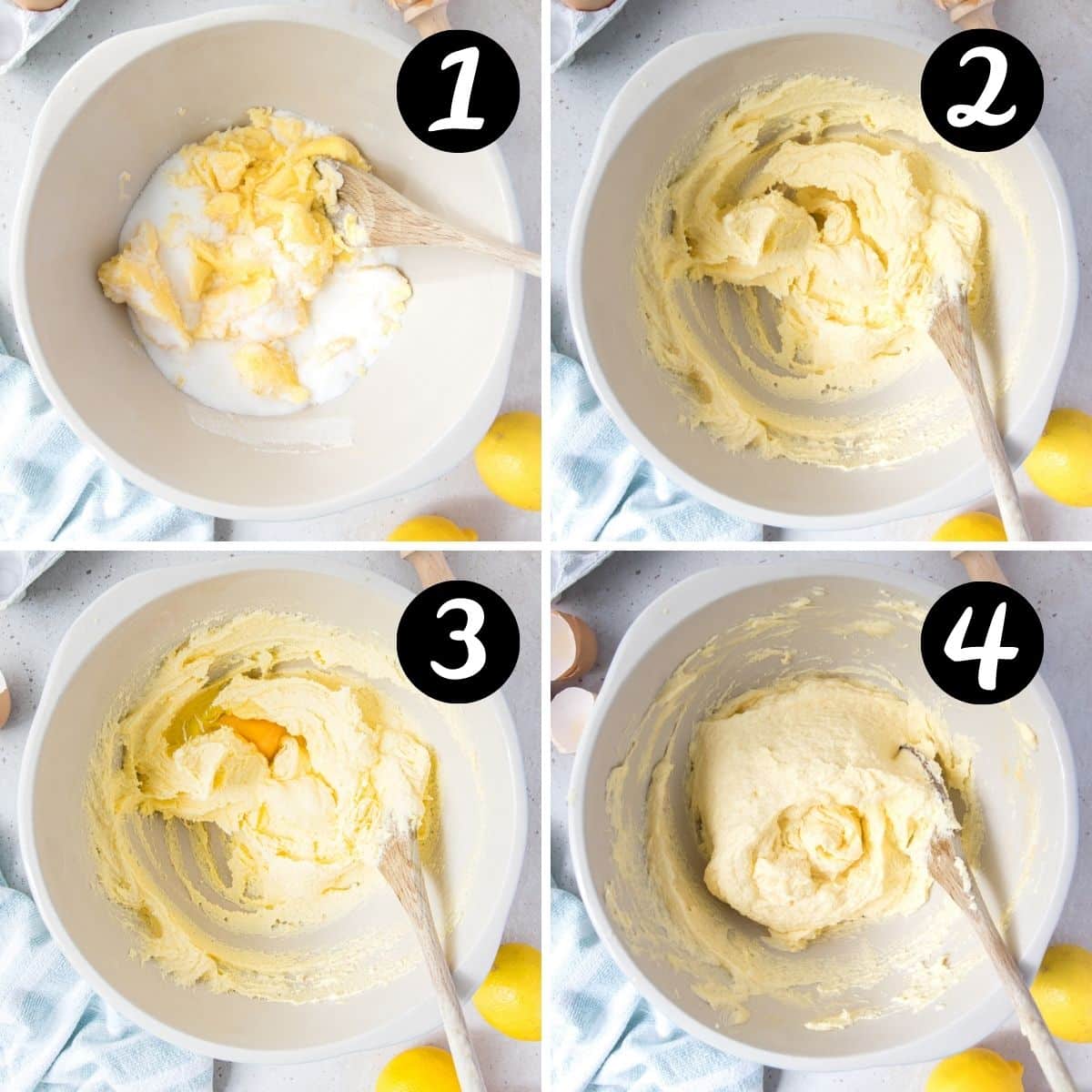
- Gently fold in half of the flour; until just combined.
- Fold in the remaining wet ingredients; add the sour cream and lemon juice and stir until just combined.
- Add the remaining flour; and fold. Be careful not to overmix.
- Spoon the mixture into a greased bundt tin.
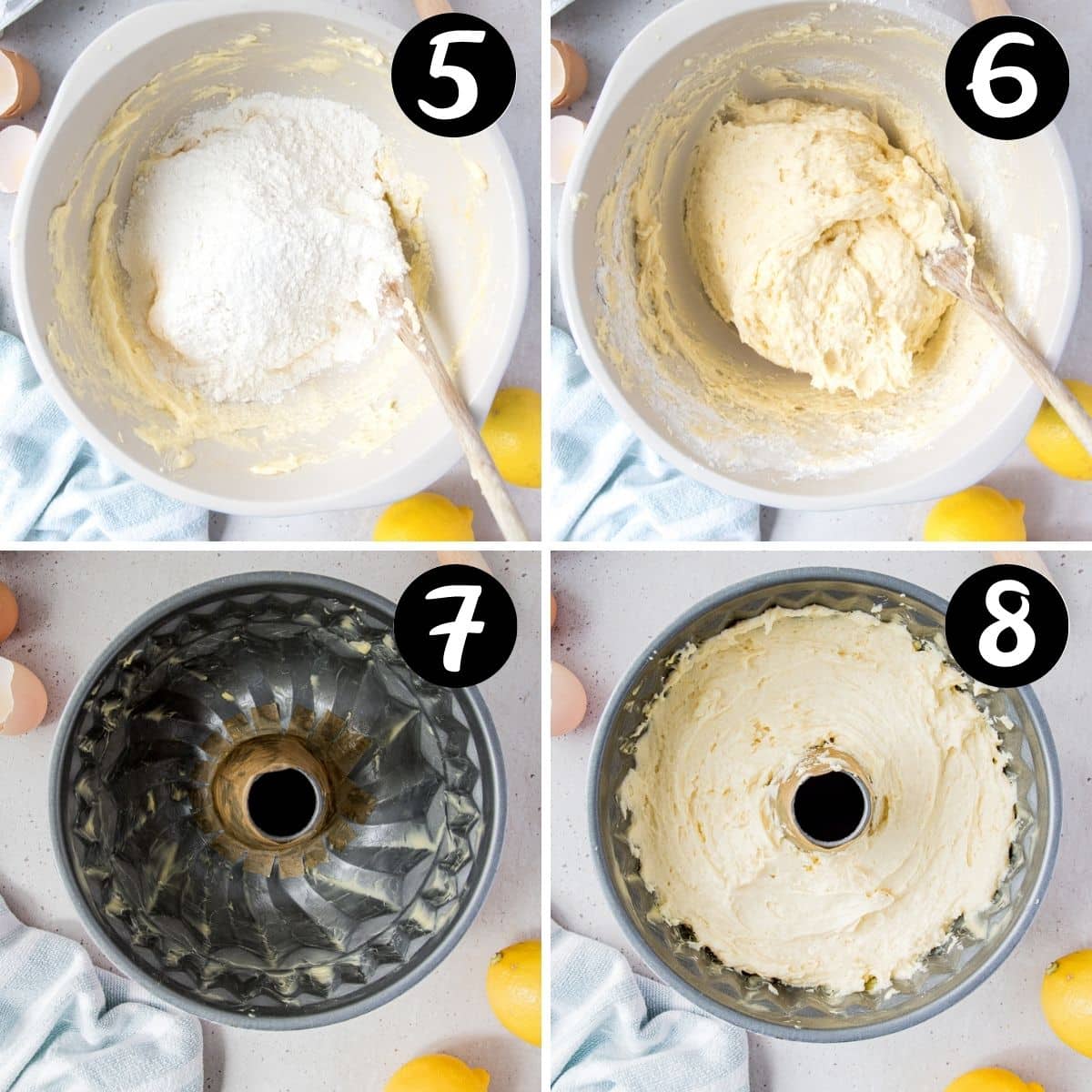
- Bake; until golden, fluffy and cooked through. Let the cake cool in the bundt tin for 5-10 minutes before turning out onto a wire rack.
- Make the syrup; when the cake is almost done, simmer the syrup ingredients in a saucepan until lightly golden and slightly thickened.
- Poke holes in the cake; using a wooden skewer, poke lots of holes in the top of the cake, about ¾ deep.
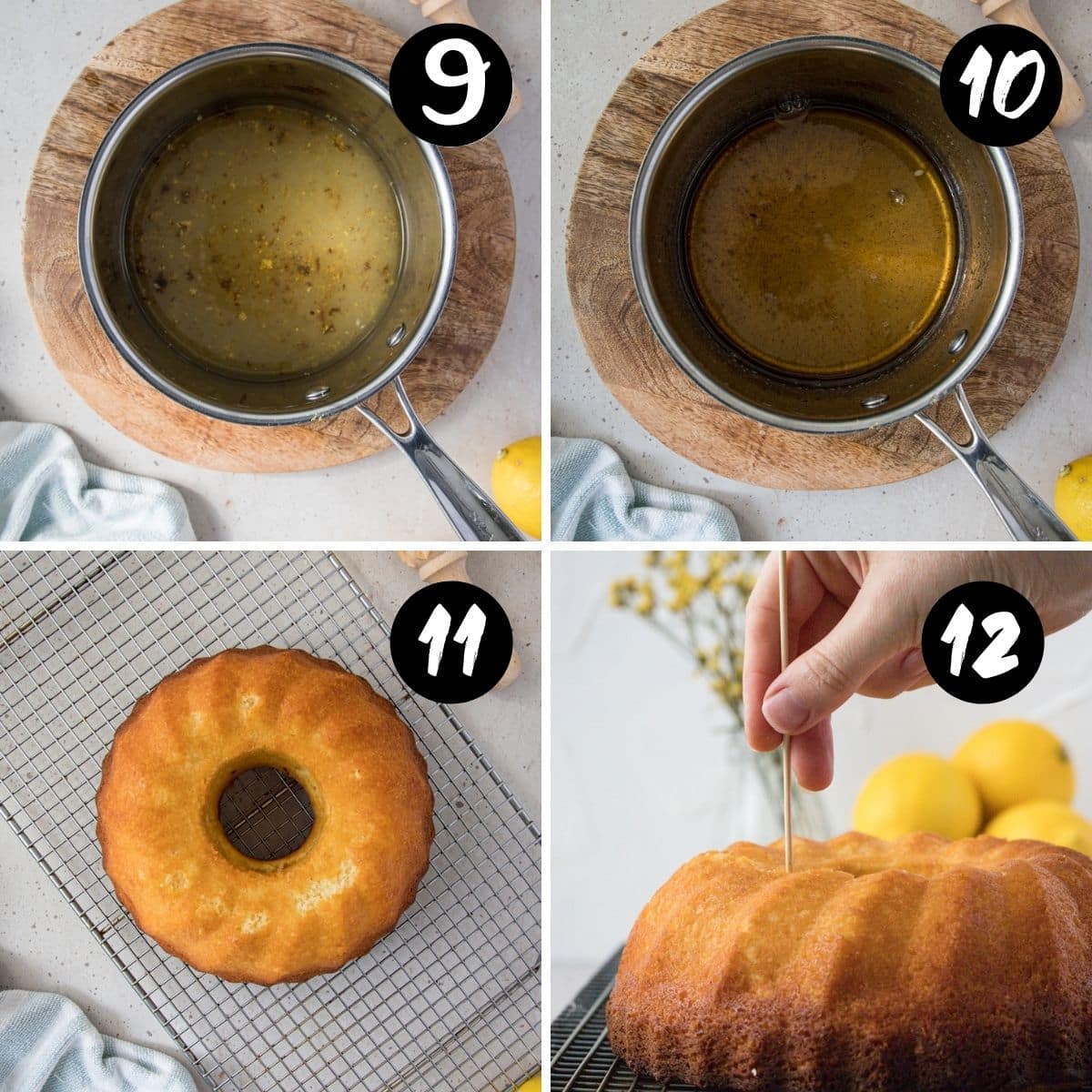
- Pour the syrup over the cake; place and tray underneath the cake to catch any excess syrup. Slowly and carefully pour the syrup over the cake, allowing it to soak into the cake and seep into the holes. Any syrup caught in the tray can be added to the cake a second time.
- Make the lemon glaze; mix the icing sugar and enough lemon juice to reach your desired consistency. Pour the glaze over the top of the warm cake and allow to set.
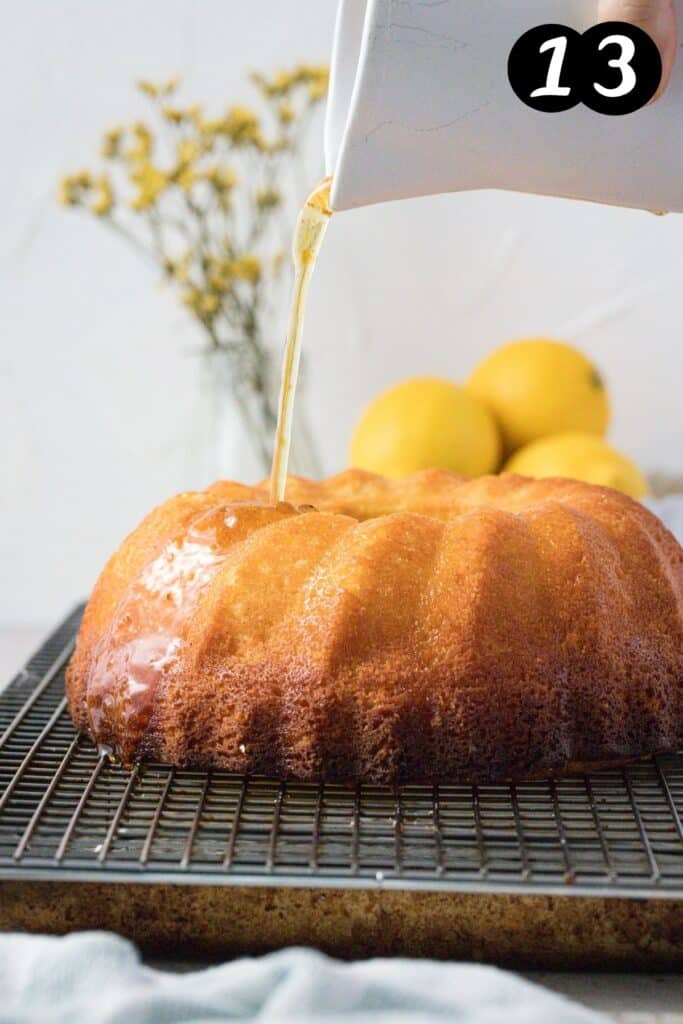

Tips for success
- Add the hot lemon syrup when the cake is still hot. It will absorb into the cake much better this way.
- Store the cake in a container at room temperature, rather than in the fridge. Due to its butter content, the cake will harden in the fridge. It’s best eaten soft at room temp or even warmed.
- You can swap the sour cream for a good quality, full-fat Greek yoghurt. Use the same quantities.
- Don’t overmix the batter! Overmixing will result in a dense and flat lemon drizzle cake, rather than a fluffy and moist cake.
- Be careful not to over-reduce the syrup. It should simmer over low heat for around 10 minutes, until it thickens slightly and becomes a light-golden colour. Overcooking will result in the syrup becoming too thick and it will taste a little bitter.
- In citrus season, you can swap the lemons for any citrus fruit you like. Try limes or oranges for a fun twist. Or try this orange drizzle cake!
- Use room temperature eggs and butter. The butter needs to be soft before creaming to avoid lumps. And the eggs will incorporate into the mixture more easily at room temperature.
- Use fresh lemons, where possible. I have made this cake using both fresh lemons and bottled lemon juice and the flavour of fresh lemons wins, every time.
- Try adding some fresh rosemary or thyme to the syrup while it is simmering, to infuse a subtle herb flavour. You can also try a few leaves of mint, or basil.
- Zest and juice the lemons for both the cake and the syrup at the same time, to make prepping easier.
- If using a bundt cake tin, grease it well with a generous amount of butter and let the cake sit in the tin for 10 minutes, before attempting to remove it. Use a blunt knife to run along the edges before gently turning the tin onto a wire rack. Alternatively, a cake tin with a removable bottom can be used. I also add baking paper to the middle part of the tin, to stop the middle of the cake sticking.
- Place a tray underneath the cake when pouring the syrup over the top, to catch the excess syrup. The syrup that ends up in the tray can be poured back over the cake!
- I used a 21cm bundt tin for this recipe. Due to the hole in the middle, the cake will cook evenly in around 35-40 minutes. You can use a regular cake tin rather than a bundt tin, but the cooking times will vary.
FAQs
Yes! Wrap the cooled cake (or any leftover pieces) and place into an airtight container or freezer bag. Freeze for up to 3 months. Let it thaw fully at room temperature before serving.
It is best eaten in the first 1-2 days, but will keep in an airtight container for 3-4 days.
Adding hot sugar syrup to the cake will add intense lemon flavour, while also adding extra moisture.
The cake is fully baked after 35-40 minutes. All ovens vary slightly, so start to check the cake at the 35-minute mark and test it to make sure. Insert a wooden skewer into the middle of the cake and if it comes out clean, with a few crumbs, the cake is ready.

Related recipes
Tried this recipe? Please leave a star ⭐⭐⭐⭐⭐ rating or leave a review below and let you know how you went!
Hungry for more? Subscribe to my newsletter and follow along on Facebook, Instagram and Pinterest for the latest recipes and news.

Lemon Syrup Cake
Ingredients
For the cake
- 250 grams butter softened at room temperature
- 1 ⅓ cup caster sugar
- zest of 2 lemons
- 3 large eggs at room temperature
- 240 grams self raising flour 1 ¾ cups
- ¼ cup sour cream or Greek yoghurt
- ¼ cup lemon juice fresh
For the lemon syrup
- zest of 2 lemons
- ¾ cup fresh lemon juice approx. 4-5 lemons
- ¾ cup caster sugar
- 1 teaspoon vanilla vanilla bean paste or essence
- ½ cup water
For the lemon glaze
- 1 ½ cups icing sugar confectioners sugar
- lemon juice to desired thickness around 3-5 tbsp
Instructions
For the cake
- Pre-heat oven to 180 °C (356 F). Grease a non-stick 21cm bundt cake tin with butter. You can also line it with baking paper, to prevent sticking.
- Beat the softened butter and sugar together with the lemon zest until pale and soft. Add the eggs, one at a time, stirring to combine between each addition.
- Fold in half of the flour, until just combined. Add the sour cream and lemon juice and stir to combine.
- Add the remaining flour and fold until combined.
- Add the mixture to the prepared cake tin and gently smooth the top.
- Bake for 35-40 minutes, or until the cake is completely cooked through. You can test the cake by inserting a wooden skewer into the middle. If it comes out clean, the cake is ready.
- Allow the cake to sit in the pan for 5-10 minutes before transferring to a wire cooling rack.
For the syrup
- When the cake is almost cooked (or just out of the oven), add all of the syrup ingredients to a small saucepan and simmer over low heat until the sugar dissolves, the syrup reduces and thickens to a maple syrup-like consistency. This should take around 10 minutes. *Keep an eye on the syrup, it will thicken slightly and become lightly golden in colour, however you don't want to reduce the syrup too much or it will become too thick and slightly bitter.
- Remove the syrup from the heat.
- Using a wooden skewer, poke holes in the top of the cake. **The more holes, the more the cake will soak up the syrup.
- Place a tray with sides under the wire cooling rack, directly underneath the cake. While the cake is still warm, slowly pour the hot syrup over the top of the cake. The tray will catch any residual syrup. Depending on the lemon flavour you want, you can re-use this syrup to soak into the cake again, if desired.
For the lemon glaze
- Combine the icing sugar and lemon juice and stir until combined. Add a little more lemon juice or icing sugar, if needed, to achieve desired consistency.
- Pour or spread the icing over the cake and let the icing slowly run down the sides of the cake. Allow to set. Serve on its own, or with a dollop of cream or yoghurt.
Notes
- Add the hot lemon syrup when the cake is still hot. It will absorb into the cake much better this way.
- Store the cake in a container at room temperature, rather than in the fridge. Due to its butter content, the cake will harden in the fridge. It’s best eaten soft at room temp or warmed.
- You can swap the sour cream for a good quality, full-fat Greek yoghurt. Use the same quantities.
- Don’t overmix the batter! Overmixing will result in a dense cake, rather than a fluffy and moist cake.
- If the syrup is too thin and watery, it will make the cake soggy by soaking too far into the top of the cake. Make sure it has reduced to a maple syrup-like consistency.
- Be careful not to over-reduce the syrup. It should simmer over low heat for around 10 minutes, until it thickens to a maple syrup-like consistency and becomes a light-golden colour. Overcooking will result in the syrup becoming too thick, which will cause it to taste bitter and not soak nicely into the cake.
- In citrus season, you can swap the lemons for any citrus fruit you like. Try limes or oranges for a fun twist. Or try this orange drizzle cake!
- Use room temperature eggs and butter. The butter needs to be soft before creaming to avoid lumps and the eggs will incorporate into the mixture more easily at room temperature.
- Use fresh lemons, where possible. I have made this cake using both fresh lemons and bottled lemon juice and the flavour of fresh lemons wins, every time.
- Try adding some fresh rosemary or thyme to the syrup while it is simmering, to infuse a subtle herb flavour. You can also try a few leaves of mint, or basil.
- Zest and juice the lemons for both the cake and the syrup at the same time, to make prepping easier.
- If using a bundt tin, grease it well with a generous amount of butter and let the cake sit in the tin for 10 minutes, before attempting to remove it. Use a blunt knife to run along the edges before gently turning the tin onto a wire rack. Alternatively, a cake tin with a removable bottom can be used.
- Place a tray underneath the cake when pouring the syrup over the top, to catch the excess syrup. The syrup that ends up in the tray can be poured back over the cake!
- I used a 21cm bundt tin for this recipe. Due to the hole in the middle, the cooking time is around 35-40 minutes. You can use a regular cake tin rather than a bundt tin, but the cooking times will vary.
- Freezing; Wrap the cooled cake (or any leftover pieces) and place into an airtight container or freezer bag. Freeze for up to 3 months. Let it thaw fully at room temperature before serving.
- Storage; this cake is best eaten in the first 1-2 days of being made, but will keep in an airtight container for 3-4 days.
- Please note that the nutrition information is based on this cake being sliced into 10 pieces, with each slice being one serve. The nutritional information is an estimate only and does not take into account any cream or other sides served with the cake.
- This recipe is made using Australian cups and spoon measurements. Due to cup sizes varying from country to country, I advise adjusting if necessary.
Nutrition
Are you following us on Facebook, Instagram and Pinterest?
Update Notes: This recipe was originally published in March 2019, but was re-published with new information and photos in April 2022.


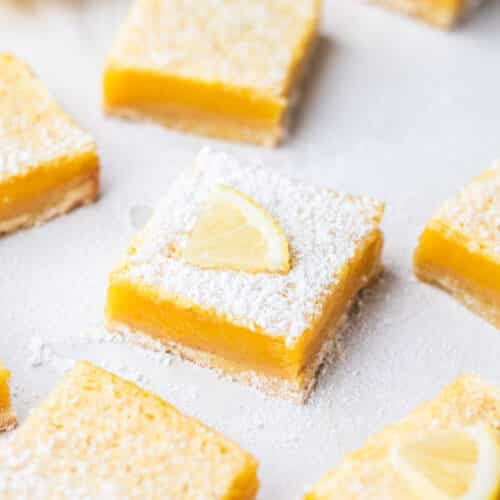




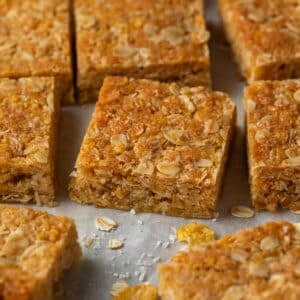

Jeanette Tranberg says
I just made this beautiful cake, fantastic recipe and everyone loved it very easy to make
Andrea Geddes says
Hi Jeanette! I’m so happy that you enjoyed the cake. Thanks for letting me know! Andrea 🙂
Andrea Geddes says
Hi Jeanette! I’m so happy to hear that you enjoyed this cake. It’s my favourite! Thanks for leaving a review. Andrea 🙂
Genelle Johnson says
I couldn’t get all of that syrup in the cake. It was all a mess. If I make this again, I’ll put the cake on the plate I’m going to serve it on and carefully pour about 1/2 of the syrup called for in the cake. Putting the cake on a cooling rack and then pouring the syrup caused the cake to be so mushy that moving it to a serving plate was nigh on impossible. I only used about half of the icing.
Andrea Geddes says
Hi Genelle, it really sounds like your syrup was not thickened enough before being added to the cake. If the syrup is too watery, it will soak too far into the cake and make it mushy and soggy.
The syrup should be reduced and thickened to a maple syrup-like consistency before adding it to the top of the cake. If you do this over a wire rack, about half of the syrup will soak into the cake and the rest will be caught by the tray underneath. I usually spoon the remaining syrup that has ended up in the tray back over the cake again as I love the strong lemon flavour, but you can leave the remaining syrup off if you prefer. It should not make the cake soggy or mushy.
You can certainly add the cake to a plate first, but any residual syrup will remain on the plate. Hopefully that helps for next time. Andrea 🙂
Marie says
We have an abundance of lemons so I made this yesterday and we have just eaten a slice with a cuppa. We all three of us gave it a gold star, it is the best lemon cake recipe we have ever tried.
Andrea Geddes says
Hi Marie! You have just made my day with your lovely comment, thank you so much for letting me know! I’m so happy to hear that you enjoyed this cake. It’s one of my favourites! Thanks so much for trying it and for taking the time to comment. Andrea 🙂